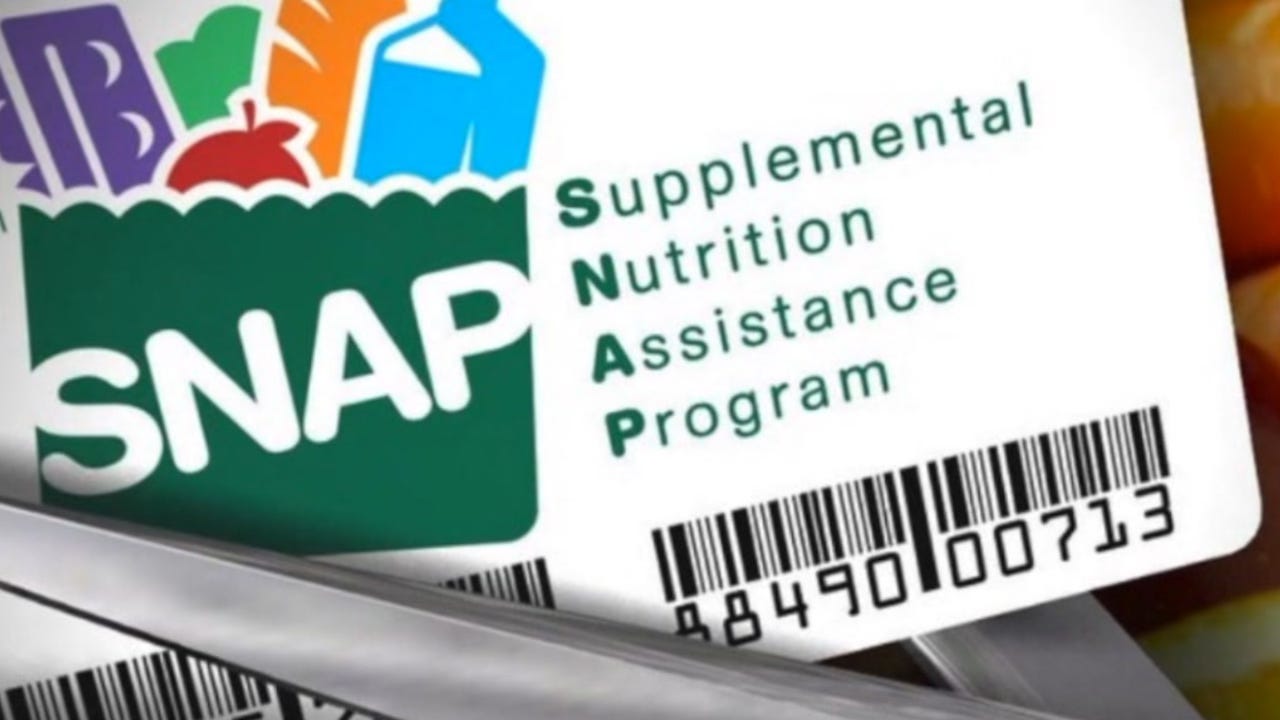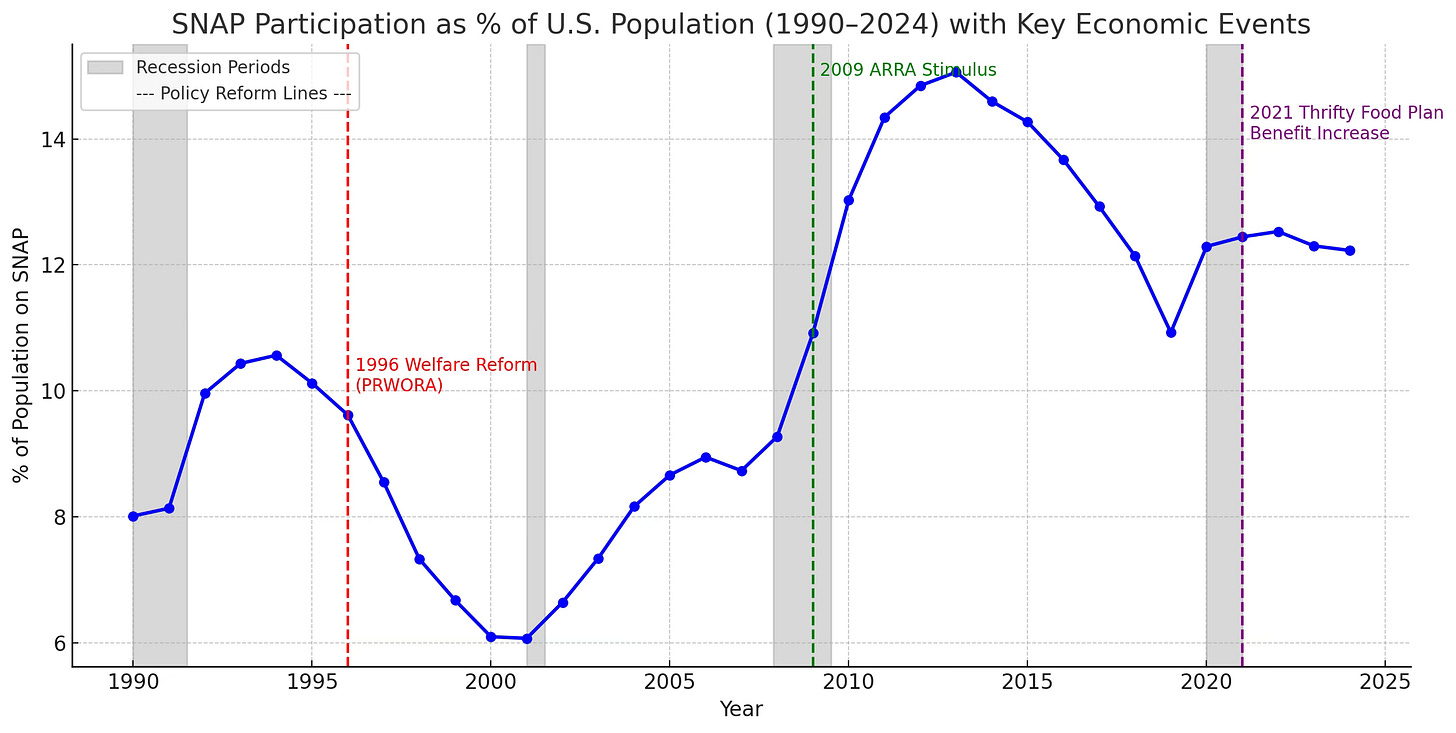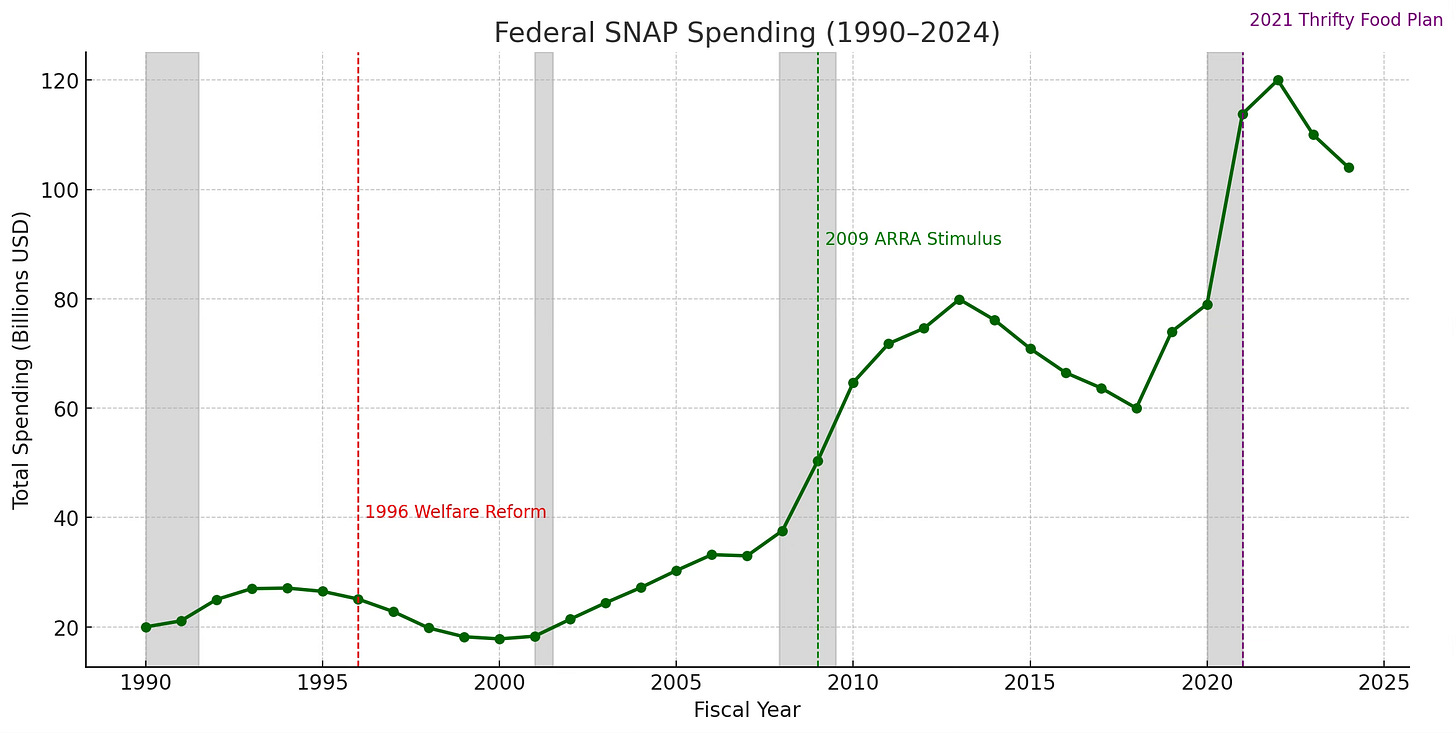Broken Trust: What Secretary Rollins’ SNAP Crackdown Reveals—and Why Accountability Doesn’t Have to Mean Surveillance
This conversation has put a national spotlight on a broken and corrupt system.
I like Secretary Rollins.
I agree with her core point: this conversation has put a national spotlight on a broken and corrupt system. SNAP was never meant to be a lifestyle—it’s a safety net, a stepping stone for taxpayers who need help getting back on their feet. But when that system is abused, it breaks public trust. To fix it, we first need to look at the facts—then at how we restore accountability without surrendering privacy.
Rollins’ Audit and the Sparks It Lit
On February 13th, 2025, Secretary Brooke Rollins says she sent letters to every governor in America, demanding that states hand over their SNAP data. “No illegal aliens can use SNAP,” she declared, and she’s right—undocumented immigrants are barred by law from receiving benefits. But what she described next sent shockwaves through the political landscape: a new “war room” inside USDA, working alongside the Department of Justice to audit every corner of the nation’s $100-billion food assistance program.
It’s a bold move—and a controversial one.
Rollins claims 29 states have complied so far (though USDA hasn’t yet published a list). She says her team found “thousands of cases of illegal EBT use,” has “moved 700,000 people off SNAP,” and made “118 arrests.” She even cited “5,000 deceased recipients still collecting benefits.” These sound alarming—but so far, they remain unverified numbers, reported only in interviews and television appearances.
Even so, the patterns she described—duplicate accounts, deceased payees, benefits crossing state lines—mirror what federal auditors have found in the past. The difference this time is scale. Rollins is bringing sunlight to a problem that’s been festering for decades.
Should the Federal Government Have Access to State Data?
Yes—and no. SNAP is federally funded but state-administered. States decide who qualifies, handle paperwork, and issue EBT cards. But the dollars come from Washington, and that means federal oversight is both logical and necessary.
From a taxpayer’s perspective, auditing state disbursements of federal money is basic accounting. If the federal government can’t see how its funds are spent, it can’t prevent abuse. The tension isn’t about whether the USDA should have access—it’s how much access it should have, and what safeguards should exist to prevent misuse of sensitive data.
That tension may be the root of the problem.
The Blue-State Resistance
Of the 29 states that reportedly complied, most are red. Many of the states pushing back on federal data access have some of the highest SNAP participation rates in the country.
According to 2024 data from USDA and USAFacts, states like New Mexico (21.2%), Oregon (17.7%), Massachusetts (15.6%), Illinois (15.2%), and Nevada (15.5%) have participation well above the national average of 12.3%.
Is it fair to suggest these states are “buying votes”? That’s speculation. But it does raise a legitimate question: if a state has a high dependency rate, it also has a political incentive to keep those benefits flowing, even if accountability suffers.
The Real 40% Increase
Rollins said, “We’ve increased almost 40% under Biden.” That statement is technically misleading. SNAP participation has remained mostly flat—hovering around 41 to 42 million people since early 2021.
What increased was total spending, due largely to:
Pandemic emergency allotments (2020–2023) that temporarily raised everyone’s benefit levels.
The 2021 Thrifty Food Plan re-evaluation, which permanently increased benefits by roughly 21%.
Inflation adjustments through cost-of-living updates (COLAs).
So yes—spending spiked—but participation did not. The increase reflects policy choices and economic inflation, not necessarily expanded eligibility or fraud.
The Long Memory of SNAP
Our chart of SNAP participation (1990–2024) tells the real story. The program has always been cyclical, rising during recessions and declining afterward—but never all the way back down.
In the 1990s, participation surged during the early recession, then fell sharply after the 1996 welfare reform law.
In 2008, the financial crisis and ARRA stimulus caused SNAP participation to explode, peaking near 15% of the U.S. population by 2013.
Even after the economy recovered, the numbers didn’t fall back to pre-crisis levels.
Then came COVID, pandemic allotments, and a permanent benefit recalculation in 2021 that cemented higher payouts per household.
What used to be an emergency program has, over time, become an embedded feature of the welfare state.
Why SNAP’s “New Normal” Stayed Higher
Economic Scarring: People bounce back from recessions more slowly than statistics suggest. Gig work, inflation, and housing costs keep many households eligible.
Broad-Based Categorical Eligibility (BBCE): Since 2009, most states loosened SNAP rules—raising income caps, removing asset tests, and simplifying renewals.
Ease of Access: EBT cards, online applications, and auto-renewals make sign-up frictionless—good for legitimate users, but easier to exploit.
Permanent Benefit Hike: The Thrifty Food Plan recalculation in 2021 raised the baseline by over 20%, and inflation has kept it there.
Demographics: More seniors and disabled adults on fixed incomes now qualify.
Rising Costs: Food, housing, and energy expenses continue outpacing wages.
In short: the safety net got wider—and now it’s harder to roll back.
Could Illegal Immigrants Be Receiving Benefits?
By law, undocumented immigrants cannot receive SNAP. But there are loopholes in practice. U.S.-born children of undocumented parents can qualify, and those benefits are issued in the child’s name. Administrative systems often can’t distinguish when mixed-status households shift members in and out.
In other cases, fraudulent identities or cross-state duplication can slip through weak verification systems. Rollins’ claim that “one person was getting benefits in six states” may sound extreme, but data-matching flaws have produced similar cases before.
None of this proves mass illegal enrollment, but it does show that integrity checks are outdated and uneven.
Fixing SNAP Without Building a Surveillance State
We don’t need a spy agency; we need competent bookkeeping. Here’s how USDA could tighten the system withoutturning it into Big Brother:
1. Narrow Data Access
Audit for eligibility, not for citizenship enforcement. Limit use of SNAP data strictly to program integrity, with time-limited access and mandatory deletion after cases close.
2. Build Privacy Into the Tech
Use hashed identifiers for cross-state duplicate checks and automated death-record matching without storing names or Social Security numbers in a single database.
3. Continuous Micro-Audits
Instead of giant data sweeps, audit 1% of cases each month and publish error-rate summaries by state. Real transparency doesn’t need names—just numbers.
4. Independent Oversight
Create an inspector-general “red team” that spot-checks states quarterly. Give whistleblowers a protected channel to report misuse.
5. Retailer Crackdowns First
The biggest fraud isn’t from recipients—it’s from retailers trafficking EBT benefits for cash. Fund analytics and field enforcement to catch high-dollar abuse.
6. Publish the Receipts
Each state should release a monthly integrity scorecard: caseload, payment accuracy, improper payments, retailer disqualifications, and appeal outcomes.
The Hard Truth About Privacy and the Welfare State
If you opt into a government benefit, you do trade a measure of privacy for accountability. That’s unavoidable.
But that consent should be narrow, proportional, and transparent—not a blank check for surveillance.
“Accountability isn’t oppression.
If you accept public assistance, you accept verification.
That means targeted checks—death records, duplicates, retailer fraud—not dragnet data grabs.
Build privacy into the pipes. Hash the IDs, delete the docs, publish the error rates, prosecute the thieves.
Do that, and the public will keep funding SNAP. Fail, and trust collapses for everyone.”
A Welfare State That Keeps Growing
America changed after 9/11, after the 2008 crash, and again after COVID-19. Each crisis expanded government reach. SNAP’s growth mirrors those transformations. Every time we normalize emergency policies, the welfare state grows another root.
The result is a nation where over 12% of the population still relies on SNAP even in full employment years. That’s not resilience—it’s dependency. And the more people depend on government aid, the more powerful and entrenched that system becomes. Bureaucracy feeds itself on human need.
The Path Forward
Secretary Rollins has opened a door to an uncomfortable conversation. Fraud and abuse in SNAP may not be as rampant as headlines imply—but public trust is on trial.
The way forward isn’t to spy harder—it’s to audit smarter, document publicly, and rebuild accountability from the inside out.
If USDA publishes its data, states adopt interoperable fraud checks, and oversight remains narrow, we can have a SNAP program that feeds the hungry without feeding corruption.
And if you take public dollars, yes—expect oversight. Because in a system built on trust, transparency is the price of help.






